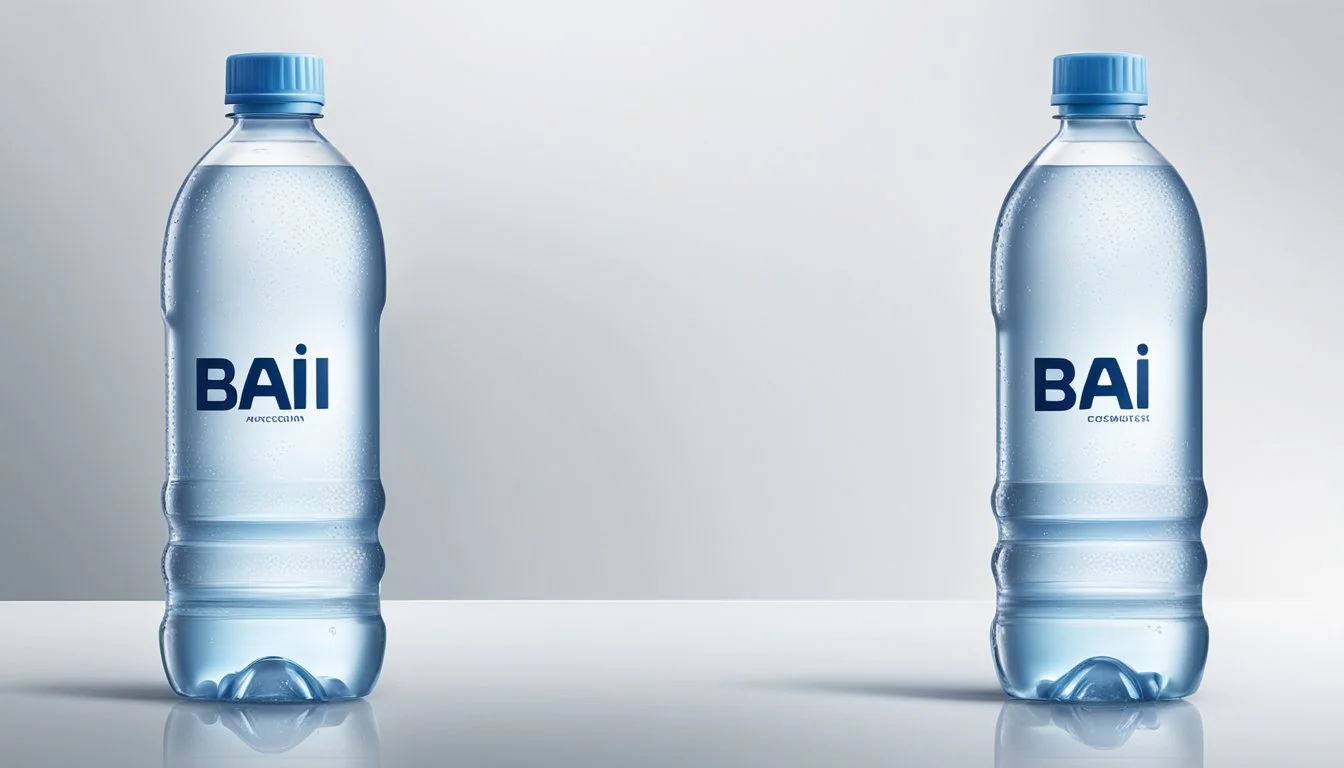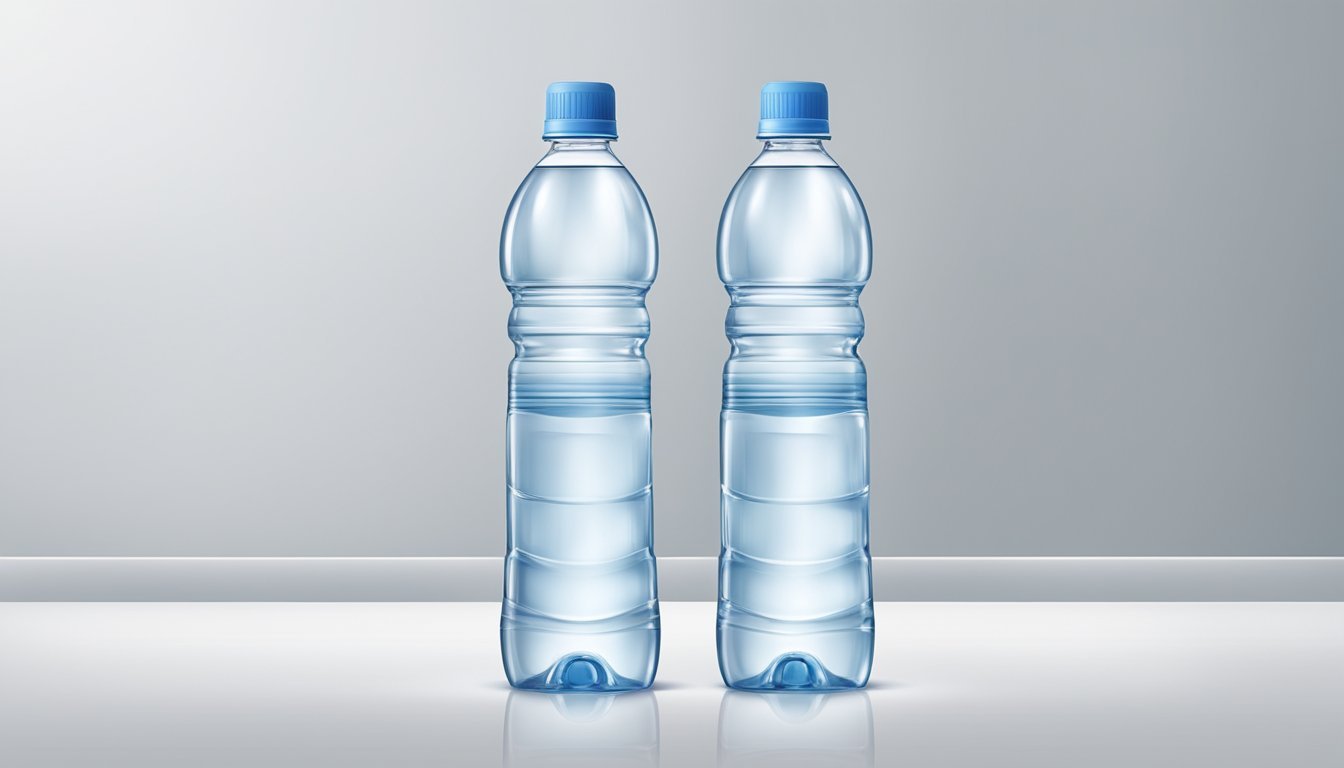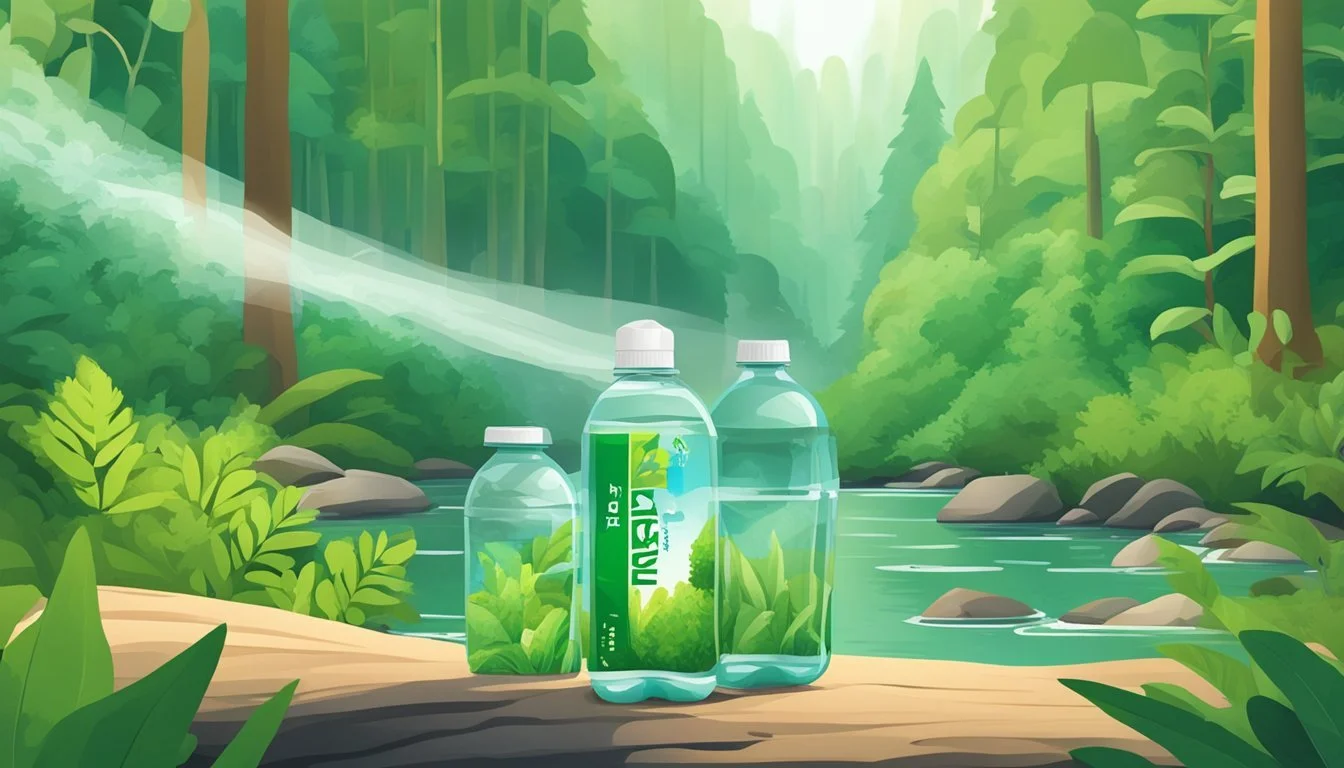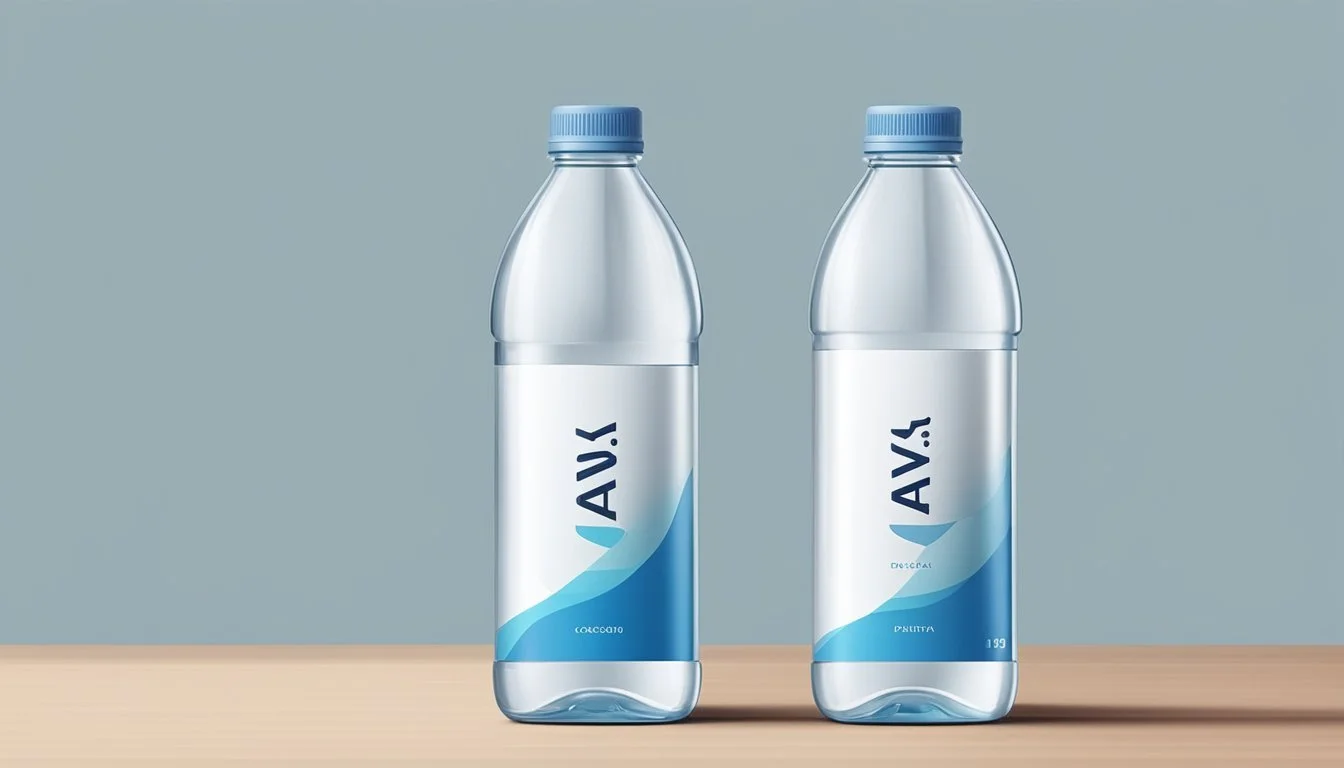Bai vs. Penta
Unveiling the Superior Bottled Water Choice
In the realm of bottled water, consumers are faced with an abundance of choices, each claiming to offer unique benefits. Bai and Penta are two such brands that stand out in the market. Bai Antioxidant Water is known for its addition of selenium, an antioxidant that is touted to provide health benefits like immune support and heart disease prevention. The water also has a higher pH level due to a special blend of alkaline minerals, aiming to cater to those seeking water that can contribute to balancing their body's pH.
Penta, on the other hand, promotes itself on the purity of its product. Penta water is ultra-purified and is free from additives, with its purification process claimed to exceed FDA standards. This brand's focus is on delivering clean, pure water without the presence of common contaminants found in some drinking sources.
When comparing Bai with Penta, consumers must consider varying factors such as the added health benefits of antioxidants and alkaline minerals versus the appeal of ultra-purified water. Each brand brings its own approach to what bottled water can offer, reflecting the diverse demands of today's health-conscious consumers.
Understanding Bottled Water
When choosing bottled water, consumers should be aware of the variations in type, source, and purity that can impact taste, quality, and health benefits.
Types of Bottled Water
Spring Water: This type is collected from a natural spring and typically contains a range of minerals such as calcium, magnesium, and potassium. These electrolytes are vital for proper hydration.
Purified Water: Usually sourced from municipal water, purified water is treated to remove chemicals and contaminants. This form of water undergoes processes like distillation, reverse osmosis, or deionization to achieve high levels of purity.
Mineral Water: Originating from underground sources, mineral water is rich in natural minerals and trace elements. It may sometimes contain higher levels of certain minerals compared to spring water.
Distilled Water: Water that is boiled and the steam condensed, leaving most contaminants behind. It is often used in medical or industrial settings.
Sourcing and Purification Processes
Sourcing: Bottled water companies obtain water from various sources, including natural springs, wells, or public water supplies. Companies typically test these sources to ensure they meet specific standards for purity and are free from contaminants and heavy metals.
Purification: There are several methods:
Filtration: Removes impurities by physically straining water or using a chemical process.
Distillation: Boils water to vapor and condenses it back into liquid, leaving contaminants behind.
Reverse Osmosis: Forces water through a semipermeable membrane to separate impurities.
Ultraviolet Treatment: Kills bacteria and viruses but does not remove chemical contaminants.
Consumers should also verify whether the plastic bottles are free from BPA (Bisphenol A), a chemical that can leach into the water and affect health. Strong testing protocols are essential, as even bottled waters can contain contaminants if not appropriately treated or sourced.
Health and Hydration
In the context of bottled water, health and hydration center around water purity, the presence of minerals, and the absence of contaminants. These factors contribute to the overall benefit of the water consumed.
Hydration and Its Benefits
Hydration is crucial for maintaining most bodily functions. Proper hydration aids in regulating body temperature, keeping joints lubricated, and ensuring that nutrients are transported effectively throughout the body. Bai water, known for its low-calorie count and addition of antioxidants, helps in combating free radicals in the body, while also providing some hydration. Penta water is ultra-purified and boasts a high pH level, which can contribute to better hydration and possibly support overall health due to its alkaline nature.
Water Content and Mineral Balance
Bottled water typically offers a unique balance of minerals. For instance, Bai water contains added antioxidants from natural sources, like coffee fruit and tea extracts, albeit in small quantities. It is also enhanced with electrolytes like potassium for better hydration. Penta, on the other hand, focuses on purity, claiming to be free of additives, sodium, and caffeine – promising a clean hydration experience.
Mineral Content:
Bai: Enhanced with antioxidants and potassium
Penta: Free of additives, sodium, and caffeine
Safety and Health Concerns
Safety is paramount when it comes to bottled water. Consumers rely on standards set by organizations like the Environmental Protection Agency (EPA) to ensure their bottled water is safe and free of harmful contaminants. Both Bai and Penta adhere to these standards. Penta water emphasizes its unique purification process and absence of contaminants, while Bai ensures its product is gluten-free and has minimal sugar content. The absence of artificial sweeteners in Bai makes it a safer choice for those concerned about added chemicals in their drinking water.
Comparing Bai and Penta
When choosing bottled water, consumers often consider factors like taste, nutritional benefits, and brand reputation. Bai and Penta are two distinctive brands in the bottled water market, each with unique offerings. This section delves into their profile, product range, and nutritional information.
Brand Profiles
Bai, known for its bold inclusion of flavors and antioxidants, emphasizes health with a low-calorie count and the infusion of natural ingredients. Each bottle of Bai water typically contains only ten calories and is sweetened with erythritol, a low-calorie sweetener. Bai also includes coffee fruit and tea extracts, providing antioxidants without artificial sweeteners or added sugar. The brand positions itself as a provider of tasty and healthy hydration solutions.
In contrast, Penta is an ultra-purified water known for its extremely high purification standards. It does not explicitly market flavors or added nutritional benefits; instead, Penta focuses on its proprietary distillation process which is claimed to provide water of exceptional purity. Penta aims at delivering hydration in its most essential form, without enhancements such as flavors or antioxidants.
Product Range
The product range of these two brands differs significantly:
Bai:
Offers various flavored water options, including coconut, mango, and blueberry.
Addresses a more diverse taste preference range for consumers seeking something beyond plain water.
Penta:
Concentrates on delivering plain bottled water without variations in flavor.
Appeals to consumers desiring water that is free from any additives or taste alterations.
Nutritional Information and Benefits
When it comes to nutritional content, Bai and Penta waters have distinct advantages:
Bai:
Each serving contains 1 gram of sugar and no artificial sweeteners.
Gluten-free and low-calorie, making it a suitable option for individuals tracking their caloric intake.
Enriched with antioxidants, which are beneficial for overall health.
Penta:
Does not contain any flavors, vitamins, or minerals.
Promotes itself on zero-calorie intake as it's just water, catering to those on calorie-restricted diets.
Neither brand uses electrolytes in their formula, unlike brands such as Essentia or Hint, which are known for their electrolyte-infused waters.
Both Bai and Penta provide hydration options that cater to different consumer needs: Bai with its flavorful and antioxidant-rich composition and Penta with its focus on purity and simplicity.
Environmental and Ethical Considerations
When evaluating Bai and Penta bottled water, one must consider the environmental and ethical implications of their products. These considerations include the materials used for bottling, the sustainability practices of each brand, and the ethics behind the sourcing of their water.
Bottle Materials
Both Bai and Penta use plastic bottles for their water products, which are of significant concern when considering environmental impact. Penta's bottles are made from high-grade PET plastic, which they claim is free from harmful chemicals and is 100% recyclable. Bai has not disclosed specific material details but promotes their bottles as being recyclable as well. Glass bottles are often seen as a more sustainable option because glass can be recycled indefinitely, but neither Bai nor Penta offers this option. The choice of bottle material directly affects the potential for recycling and the long-term environmental footprint.
Sustainability Practices
Sustainability refers to practices that do not deplete or permanently damage natural resources. In terms of sustainability, Bai emphasizes its use of local water sources to minimize transportation impacts. Conversely, Penta purports to utilize sustainable practices by reducing its carbon footprint throughout its production process, although specific details are sparse. Neither company has provided comprehensive public reports on their carbon footprint or water usage, which are crucial for assessing their sustainability claims.
Ethical Sourcing
Ethical sourcing addresses the origin of the water and its impact on local communities and ecosystems. Bai sources water domestically, which can reduce transportation emissions but may raise concerns over the use of local groundwater resources. Penta's water is advertised as ultra-purified, but there is limited information regarding its sourcing and whether it affects local groundwater supplies. The responsibility falls on both companies to provide transparent information on how they ensure their water sourcing does not harm local ecosystems or deplete groundwater to be considered ethical.
Consumer Preferences
When consumers select bottled water, they primarily consider taste, packaging, and value. These factors weigh heavily on the decision between Bai and Penta waters.
Taste and Palatability
Bai offers flavored water that includes natural flavors without the addition of artificial sweeteners. The taste profile is a significant factor for consumers who prefer a hint of taste without the calories. On the other hand, Penta water is positioned as ultra-pure water without any added flavors, catering to those preferring the original taste of water.
Bai: Variety of fruit-inspired flavors.
Penta: Pure water with no additional flavors.
Packaging and Branding
Consumers often perceive the quality of water through its packaging and branding. Bai uses vibrant and colorful packaging to match its variety of flavors, which appeals to individuals seeking a modern and health-conscious image. Penta's branding focuses on the purity and science behind their filtration process, likely resonating with consumers valuing simplicity and scientific backing.
Bai: Colorful, eye-catching bottles.
Penta: Clear, minimalist design emphasizing water purity.
Price and Availability
Price is a vital concern for consumers, as bottled water is a repeat purchase item. Bai's flavored waters are typically priced slightly higher due to their added value of taste and antioxidants. Penta, marketed as a premium water brand, may carry a higher price tag, which influences consumer choice based on budget. Availability is another critical aspect, with both brands being widely accessible in grocery stores, although Penta may be less prevalent.
Bai:
Price: Moderate, flavored water category.
Availability: Widely available with extensive distribution.
Penta:
Price: Higher, premium water category.
Availability: Available, though potentially less so than Bai.
Expert Analysis and Comparisons
This section delves into the intricacies of Bai and Penta bottled waters, evaluating expert opinions and market standings informed by industry benchmarks.
Critical Reviews
Bai water has not been traditionally spotlighted in expert bottled water rankings, suggesting that it might not compete directly in terms of purity or taste with top-ranked brands like Evian, Fiji, or Icelandic Glacial. Its differentiation lies more in the infusion of antioxidants and flavoring rather than the water source itself.
Penta water, on the other hand, emphasizes its ultra-purification process, which might appeal to those prioritizing purity levels. However, critics from sources like Thrillist, specifically Dan Gentile, may not list Penta in their rankings of the best-to-worst bottled waters, suggesting a less prominent standing in the pure water segment dominated by brands such as Evian.
Market Position
In the broader bottled water market, Bai uniquely straddles the line between enhanced water and standard bottled water, finding its niche amongst consumers seeking added health benefits. As such, it may not directly compete with traditional bottled water brands such as Dasani, Aquafina, or Smartwater.
Penta’s market position is more in line with premium brands like Voss and Mountain Valley Spring Water, which also tout high purity levels and specific health benefits. It remains a less common find on the shelves compared to ubiquitous brands like Dasani and Aquafina, indicating a more selective distribution and targeted customer base.
Conclusion
When comparing Bai water and Penta, several factors come into play, such as the source, purification process, taste, and added benefits.
Bai water is known for its antioxidant infusion and flavorful options. It offers various fruit-flavored waters without added sugar, using the natural sweetener erythritol and a small amount of stevia. The brand markets itself not only as a source of hydration but also as a source of antioxidants derived from coffee fruit and white tea extract.
On the other hand, Penta is ultra-purified water that prides itself on a proprietary purification process. It is devoid of additives, solvents, or chemicals, aiming to deliver purity and hydration. Penta's selling point is its high degree of purification, resulting in a clean taste.
Taste Preference:
For those who enjoy flavored water: Bai water.
For those who prefer pure, unflavored water: Penta.
Health Considerations:
Bai water supplements its offerings with antioxidants.
Penta focuses on the absence of contaminants.
Recommendations:
Consumers seeking a healthful antioxidant boost with flavor might prefer Bai water. Those looking for pure water without additives or flavoring might lean towards Penta.
It is advisable for consumers to consider personal health goals, taste preferences, and the product philosophies of Bai and Penta when making their choice. Each has its merits, and preference will vary by individual need and desire for flavor or purity.







